We are already in the final stretch of 2015, from Viafirma, we wanted to use today’s post to review the trends of usage in the semester of browsers and operating systems on mobile devices. Here we go.
Mobility is something that is gaining more importance every day; we work from mobile, sign contracts through tablets… The revitalization of our environment is leading to the need of being able to do more things through our mobile devices, things that before we used to do manually or from the PC.
For companies dedicated to provide mobility solutions, such as Viafirma Documents or Viafirma Inbox, to understand and anticipate the preferences of users regarding browsers and operating systems is extremely important. The reason is that we need to ensure that our applications work seamlessly in OS and browsers that users prefer.
Regardless of profession you have or the requirements of your job, here you have a fact that proves the importance of these trends in mobility; according to the IAB (Internet Advertising Bureau) in 2015 80% of users have accessed to the Internet via mobile phone daily, compared to 67% who has done it via computer.
Before you dive into trends, we leave another interesting fact to measure the dimensions of which we speak, according to INE, 2014 in Spain around 26 million users access the Internet through a computer, mobile or Tablet. This figure represents an increase of 23% users from the previous past.
We are going to divide this article into two parts, on the one hand analyzing trends in operating systems and on the other hand, we will see how it has evolved the preference of mobile users related to browsers.
1. Mobility: Browsers
Here you have the global trend of the most used browsers so far in the last half of 2015 (Netmarketshare) browser.
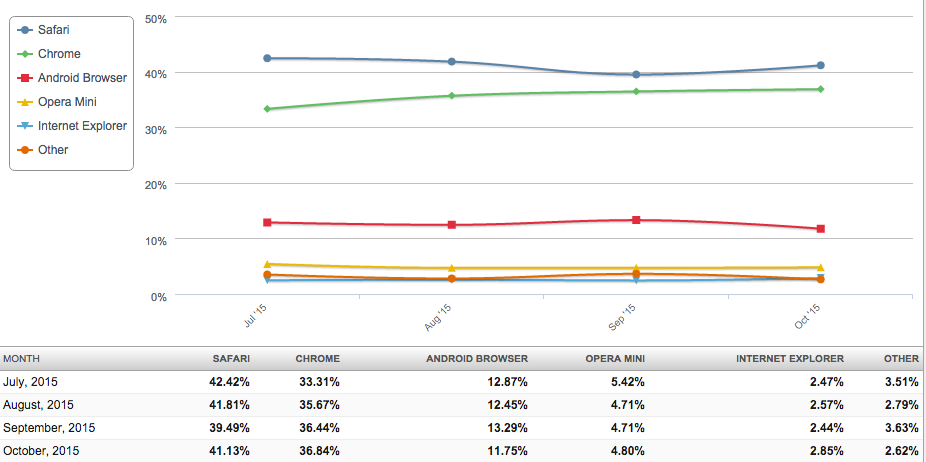
As can be seen in the graph, on mobile devices, the leader is Safari with 41% of the market share in average, followed closely by Chrome, which is experiencing an increment in market share, since it has grown by 3.5 points in just six months
On the other hand android browser, Internet Explorer and Opera, seem to be stable in the number of users who have, between them representing less than 20%.
Curiously, when we compare the most used mobile browsers, the figures are so different when we look at the statistics of access to the Internet via computer.
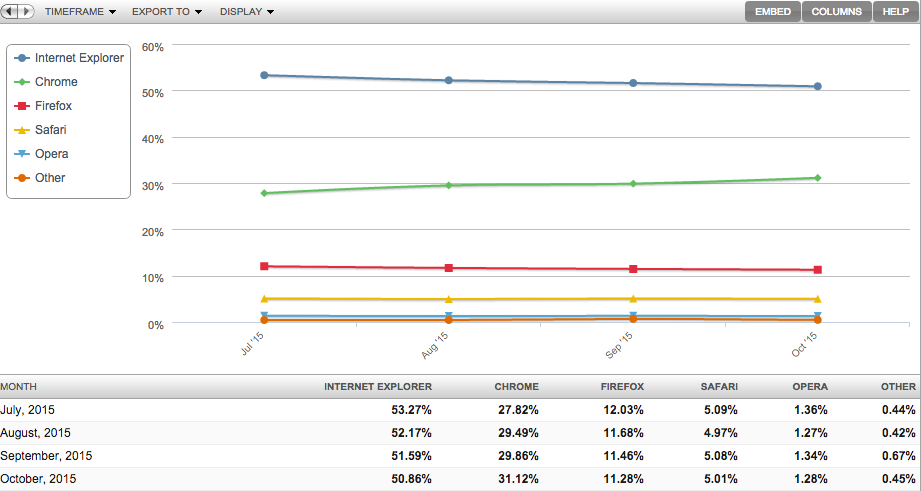
Globally, Internet Explorer is still the market leader, though losing ground against Google Chrome.
2.- Mobility: mobile Operating Systems
Here you have the evolution of operating systems on mobile devices globally (Netmarketshare).
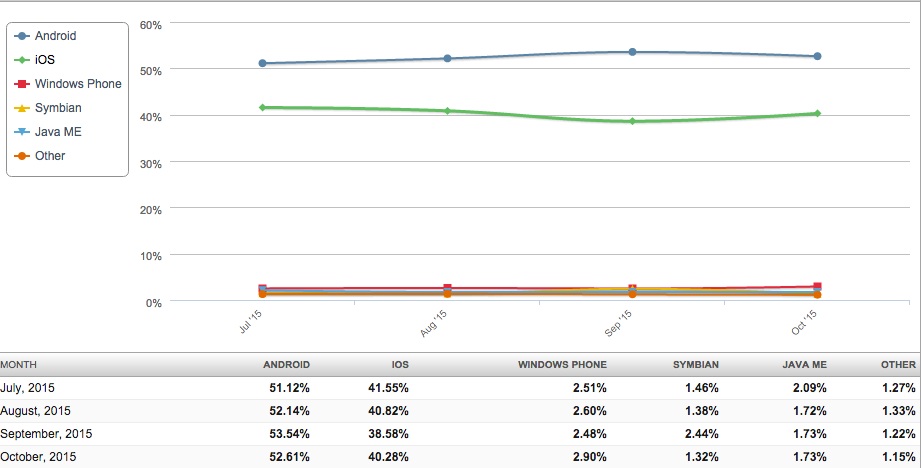
As can be seen in the graph, globally there is a clear dominance of Android with over 50% market share, followed by iOS with a share of around 40%. Leaving less than 10% for all other operating systems like Java ME, Windows phone etc.
To better analyze the trend, we have chosen to go back to 2013 to get a better overview of what has been the evolution of Android and IOS. Surprisingly the use of iOS has maintained a downward trend with the same percentage growth of Android, until April 2015, where it seems that even with fluctuations on both sides, but it is maintaining the percentage of each other.
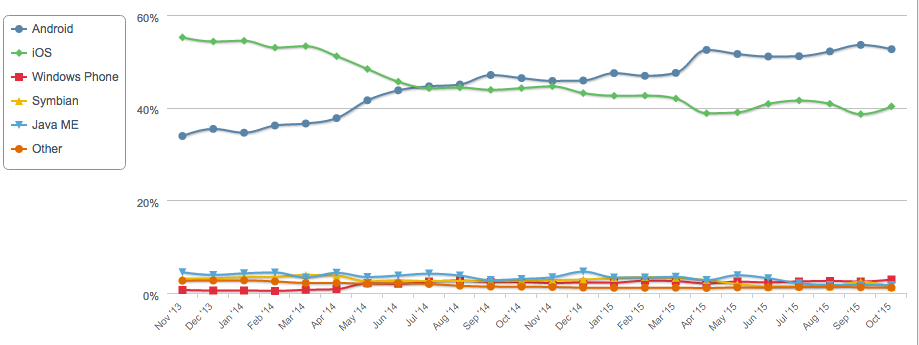
So for those you who are developing applications, take note, to assure that they are fully compatible with both Android and iOS and opening of you might be more than 90% of the total market share.
Finally, we could not leave this report without including the evolution of the most used resolutions due to the importance it has for mobility. Throughout the semester, the screen resolution most commonly used, as shown in figure is 1366 x 768 with 14, 99%. Importantly, the spread between the different types of resolution but the distribution has remained stable throughout 2015.
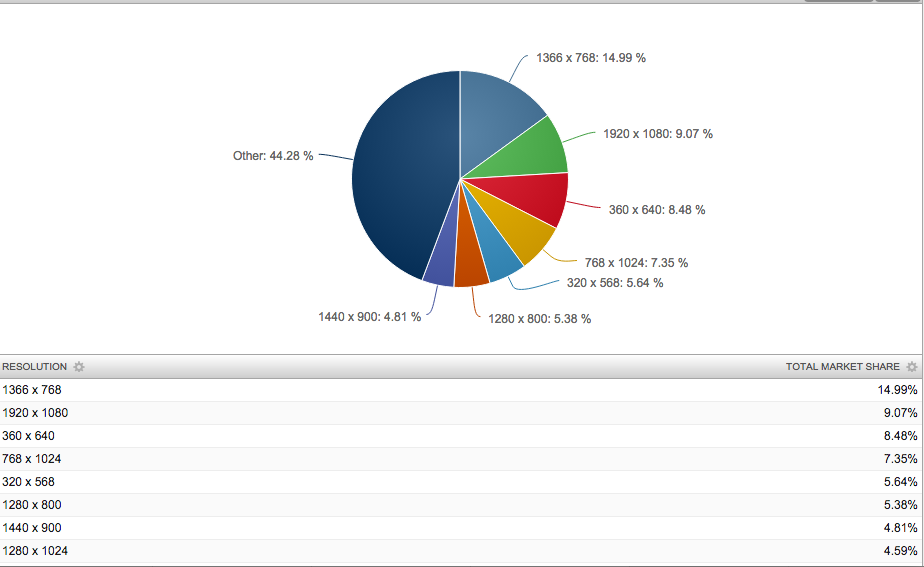
Within this article we have reviewed the performance of mobile devices users preferences in terms of browsers and operative systems over the last six months, which, as noted above is useful for all those involved in the universe mobility. I hope you have been helpful.